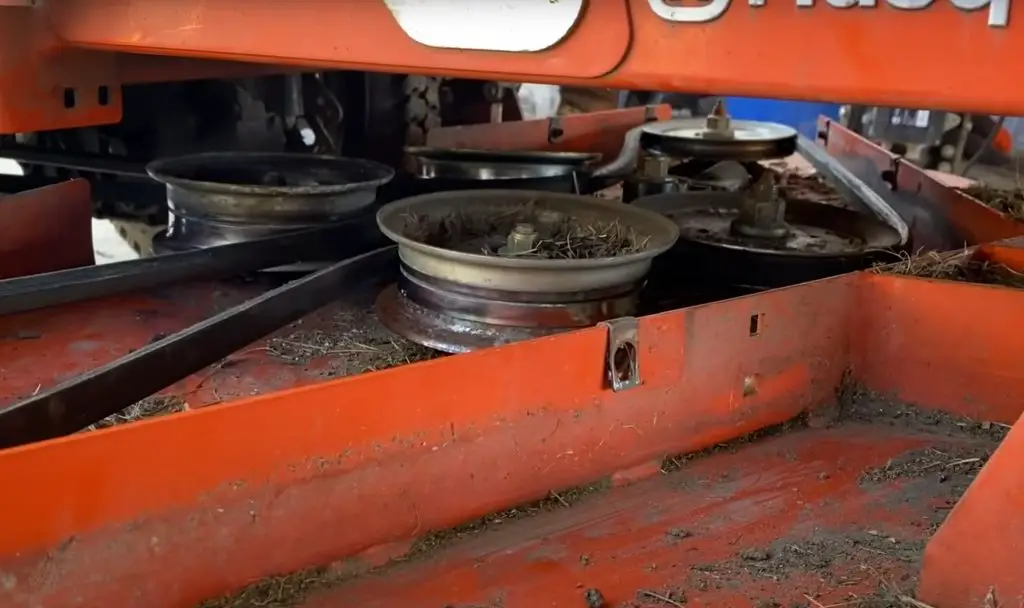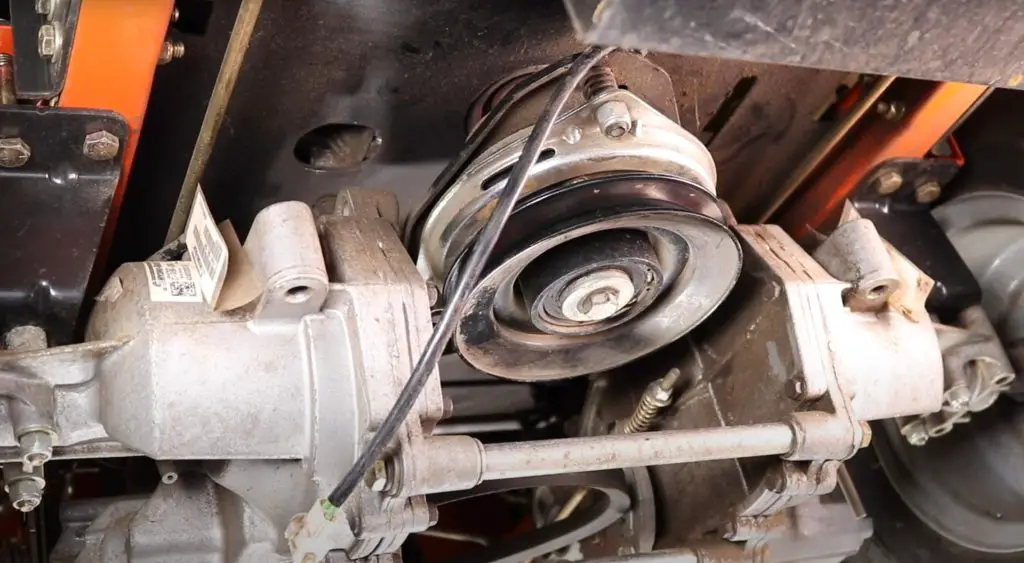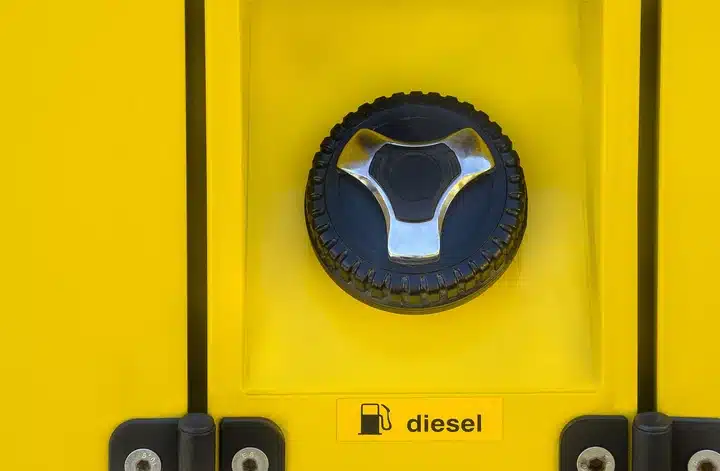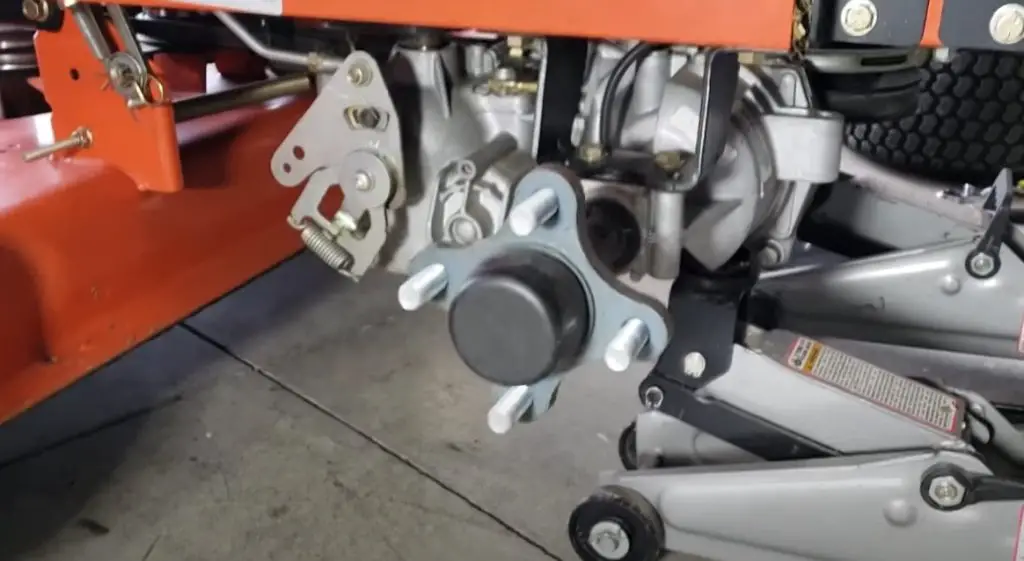As a seasoned expert with years of troubleshooting and maintaining these machines, I offer insights grounded in real-world applications and a deep understanding of Husqvarna’s engineering.
This article cuts through the common issues owners face, providing you with concise, actionable solutions.
Key Takeaways
- Husqvarna zero turn mower problems: engine starting difficulties, power loss, blade engagement problems, steering challenges, excessive vibration, uneven cutting, fuel system concerns, smoke emission, hydrostatic transmission weakness, and electrical system faults.
- For each identified issue, it provides a series of steps to follow, such as checking battery voltage, cleaning or replacing the carburetor and filters, inspecting belts and spark plugs, and ensuring proper tire pressure and component integrity.
- Emphasizes the significance of routine maintenance tasks like cleaning, adjusting tire pressure, and checking engine oil levels to prevent the aforementioned issues and prolong the mower’s lifespan.
- Offers a troubleshooting guide with solutions for each problem area, recommending consultation of the owner’s manual for specific advice and professional assistance for more complex issues to ensure the mower operates at its best.
Identifying Common Husqvarna Zero Turn Mower Problems
No matter how diligently you maintain your Husqvarna mower, issues may still arise. Common problems include:
- Engine starting difficulties
- Loss of power and stalling
- Blade engagement issues
- Steering and movement difficulties
- Excessive vibration and noise
- Uneven cutting performance
- Fuel system concerns
- Smoke emission
- Hydrostatic transmission weakness
- Electrical system troubles
Recognizing these common issues allows for efficient diagnosis and resolution of problems, promoting optimal performance and longevity of your Husqvarna lawn mower, including the popular Husqvarna riding lawn mowers.
One area that often causes problems in Husqvarna mowers is the fuel system. Obstructions in the fuel filter, such as dirt, grass residue, or even pieces of wire, can restrict fuel flow and lead to clogged fuel lines.
Recently, I tackled a stubborn starting issue on a client’s Husqvarna zero turn mower. After swiftly replacing the worn spark plugs and cleaning a clogged fuel filter, the mower sprang to life, much to the customer’s relief and satisfaction.
Read More:
Engine Starting Problems
When your Husqvarna mower refuses to start, it can be frustrating. Can be caused by various factors, including fuel, spark, and air-related issues. A dead battery is a common culprit, so check the battery voltage using a multimeter.
Voltage of a fully charged battery should be in the range of 12.5 to 13.0 volts. Also, make sure the spark plugs are in good condition and securely fastened. Loose spark plug wires can hinder a good connection and prevent the mower from starting.
Another common cause of starting difficulties is a clogged or defective fuel system.
Here are some steps to address this issue:
- Clean the carburetor with a carburetor cleaner to remove any dirt or debris that may be obstructing the flow of the fuel-air mixture.
- Check the fuel lines for any obstructions and clear them if necessary.
- If the fuel pump is defective, it may need to be replaced.
Also Read: How To Start A Bad Boy Mower
Loss of Power and Stalling

Loss of power and stalling in Husqvarna mowers can result from clogged fuel lines, dirty air filters, or damaged cooling fins. Clogged fuel lines prevent the engine from receiving the necessary fuel, leading to power loss and stalling.
A solution to this would be to clean the fuel lines and replace the fuel filter if it’s dirty.
Additionally, inspect the air filter and replace it if it’s clogged or excessively dirty, as this can also contribute to power loss.
Damaged cooling fins can cause the engine to overheat, which may lead to stalling. Check the cooling fins and make sure they are clean and not littered with debris. If they are damaged, they may need to be replaced to prevent further engine problems.
Here are some steps to address this issue:
- Inspect and clean the fuel lines to ensure there are no clogs.
- Replace the fuel filter if it appears dirty or clogged.
- Check the air filter and replace it if it’s dirty or clogged.
- Examine the cooling fins for debris and clean them thoroughly.
- Replace any damaged cooling fins to prevent engine overheating.
Blade Engagement Issues
Blade engagement issues in Husqvarna mowers can be frustrating, especially when you’re in the middle of mowing your lawn. These issues may arise due to worn belts, faulty PTO switches, or damaged linkages.
Diagnosing this problem requires inspecting both the engine belts and drive belt before moving on to replace any components.
If the belts are damaged or worn, they may cause the blades to spin unevenly or become misaligned, resulting in imbalanced rotation and poor cutting performance.
If you suspect a problem with the PTO switch, examine the connections and ensure the switch is operating as intended. Consult your owner’s manual for further instruction on troubleshooting the safety switch.
In some cases, replacing the switch may be necessary to resolve blade engagement issues.
Here are some steps to address this issue:
- Inspect the engine belts and drive belt for signs of wear or damage.
- Replace any belts that are worn out or damaged to ensure even blade rotation.
- Check the PTO switch connections and test for proper operation.
- Refer to the owner’s manual for specific troubleshooting steps for the safety switch.
- If the PTO switch is faulty, replace it to resolve blade engagement issues.
Steering and Movement Difficulties

Steering and movement difficulties in your Husqvarna mower can be frustrating and potentially hazardous. These issues can be caused by tire pressure, worn components, or tracking issues.
Addressing these problems begins with checking the tire pressure to make sure it aligns with the manufacturer’s tire pressure specification. Unequal tire pressure can cause steering problems and affect the mower’s stability.
Next, inspect the steering system components such as bushings, gears, and washers, as these can become worn out and cause ongoing steering issues.
If any components are damaged, replacing them may help resolve the steering and movement difficulties.
Additionally, check the hydraulic system, and ensure the oil level is adequate, as low hydraulic oil levels can also contribute to movement issues.
Here are some steps to address this issue:
- Check and adjust the tire pressure to match the manufacturer’s specifications.
- Inspect steering components like bushings, gears, and washers for wear; replace if necessary.
- Verify the hydraulic system’s oil level and top up if it’s low to improve movement.
Excessive Vibration and Noise
Excessive vibration and noise can result from unbalanced blades, damaged belts, or the accumulation of debris.
Addressing these issues starts with checking the mower blades for any damage or wear. If they are unbalanced, replace the blades to ensure smooth operation.
Next, check the mower belts for damage or wear. Damaged belts can cause the blades to spin unevenly and contribute to excessive vibration and noise. If necessary, replace the belts to restore proper operation.
Finally, clean any debris trapped around sensitive areas on both sides of the mower deck, as this can also contribute to vibration and noise during operation.
Here are some steps to address this issue:
- Inspect the mower blades for damage or wear and replace if they are unbalanced.
- Examine the mower belts for any signs of damage or wear and replace as needed.
- Remove debris from around the mower deck to reduce vibration and noise.
Uneven Cutting Performance
In Husqvarna mowers, this issue can be caused by bent spindles, worn bearings, or dull blades. If necessary, replace them to ensure smooth operation and even cutting performance.
Dull blades can result in uneven cutting and may need to be sharpened or replaced to restore optimal performance.
Additionally, proper installation and maintenance of mower blades are crucial in preventing uneven cuts. Consult your owner’s manual for guidance on how to install and maintain your mower’s cutting blades properly.
Here are some steps to address this issue:
- Check for bent spindles and worn bearings; replace if found to be faulty.
- Sharpen or replace dull mower blades to improve cutting performance.
- Follow the owner’s manual for correct blade installation and maintenance.
Fuel System Concerns

Fuel system concerns in Husqvarna mowers, such as leaks or blockages, can lead to engine problems and should be addressed promptly. Some common reasons for fuel leaks in Husqvarna zero turns include:
- Damaged fuel lines
- Defective fuel tank
- Damaged fuel pump
- Unsealed gas cap
To prevent further damage, it is important to address fuel leaks promptly. Inspect all components and replace any that show signs of cracks or leaks. Additionally, ensure the gas cap is properly sealed to prevent fuel evaporation and leaks.
In some cases, blockages in the fuel system may cause issues with the engine, such as a clogged fuel line.
Here are some steps to address this issue:
- Inspect the fuel lines, fuel tank, and fuel pump for damage or leaks and replace if necessary.
- Check the gas cap for a proper seal to prevent evaporation and leaks.
- Clean any blockages from the fuel lines and replace the fuel filter if dirty to ensure good fuel flow.
Smoke Emission
Smoke emission from your Husqvarna mower can be concerning and may indicate engine issues, such as an improper air-to-fuel ratio, oil leaks, or clogged air filters.
Addressing these issues starts with checking the air filter and replacing it if it’s clogged or excessively dirty. A clogged air filter can cause the engine to run rich, resulting in smoke emission.
The color of smoke emitted from a lawn mower can help diagnose various issues with the machine:
- White Smoke: Often indicates that the mower is burning oil. This can happen if the mower is tipped over, causing oil to spill into the exhaust system, or if there’s an oil overflow issue. It could also mean a serious internal engine problem like a blown head gasket.
- Blue Smoke: Similar to white smoke, blue smoke suggests that the engine is burning oil. This could be due to worn engine components such as piston rings, valve seals, or a high oil level.
- Black Smoke: Usually points to an overly rich fuel mixture – the engine is burning too much fuel. This could be due to a dirty air filter, a stuck choke, or a problem with the carburetor.
- Grey Smoke: Can be difficult to distinguish from white or blue smoke, but it often indicates a problem with the fuel system, potentially a clogged fuel return line or a faulty fuel injector.
Next, inspect the engine for oil leaks. If oil is leaking onto the engine’s hot surfaces, it can cause smoke emission. Repair any leaks to prevent further issues. In some cases, professional assistance may be necessary to diagnose and fix the problem.
Consult authorized repair shops if uncertain about the cause of the smoke emission or how to fix it.
Here are some steps to address this issue:
- Replace the air filter if it is clogged or excessively dirty to correct the air-to-fuel ratio.
- Inspect the engine for oil leaks and repair any found to prevent smoke emission.
- If the problem persists or is unclear, seek professional assistance from an authorized repair shop.
Hydrostatic Transmission Weakness

Hydrostatic transmission weakness in Husqvarna mowers can result from low hydraulic oil levels or worn belts. Low hydraulic oil levels can cause the transmission to function poorly and reduce the mower’s overall performance.
Next, inspect the drive belt for wear or damage, as a worn belt can also contribute to hydrostatic transmission weakness. If necessary, replace the belt to restore proper operation.
Routine tasks like cleaning under the hood and following Husqvarna’s recommended oil change intervals can aid in averting hydrostatic transmission issues and maintaining optimal performance.
Here are some steps to address this issue:
- Check the hydraulic oil level and fill to the recommended range if low.
- Examine the drive belt for wear or damage and replace if needed.
- Perform routine maintenance such as cleaning under the hood and adhering to recommended oil change intervals.
Electrical System Troubles
Electrical system troubles in your Husqvarna mower can cause various issues, such as battery drainage or charging problems.
Inspection and servicing of components such as spark plugs, and wiring can resolve these issues. Check the spark plugs for wear or damage, and ensure the wires are securely fastened to prevent poor connections, which can lead to starting issues.
In some cases, a faulty charging system may be the cause of electrical system troubles.
Here are some steps to address this issue:
- Inspect the charging system for any damaged components.
- Replace any damaged components as necessary.
- If you’re unsure about how to diagnose or fix the electrical system, it’s always a good idea to consult a professional for assistance.
Preventative Maintenance Tips
Regular cleaning, component inspection, and adherence to manufacturer recommendations can help prevent common issues and costly repairs.
Some essential maintenance tasks include checking and adjusting tire pressure, inspecting and cleaning cooling fins, and monitoring the engine oil level to prevent damage or decreased performance.
Adhering to the recommended maintenance schedule for your specific Husqvarna mower model, as outlined in the owner’s manual, is vital.
Regular maintenance keeps your mower running smoothly and efficiently, ensuring a beautifully manicured lawn for years to come.
Troubleshooting Guide and Solutions
When dealing with issues on your Husqvarna zero turn mower, having a comprehensive troubleshooting guide and solutions at your disposal is crucial.
Always consult your owner’s manual for specific troubleshooting advice and seek professional assistance if uncertain.
Sometimes, diagnosing and fixing more complex problems with your mower may require professional help. Don’t hesitate to bring your mower to a certified repair shop or technician if you’re unsure about how to fix an issue.
Proper troubleshooting and prompt resolution of issues can help extend the life of your Husqvarna riding mower and maintain its peak performance.
Summary
Husqvarna zero turn mowers are a valuable investment, and proper maintenance and troubleshooting are key to ensuring their optimal performance and longevity.
By addressing Husqvarna zero turn mower problems such as engine starting, blade engagement issues, and steering difficulties, as well as performing regular preventative maintenance, you can keep your mower running smoothly for years to come.
Remember to consult your owner’s manual and seek professional assistance when necessary to ensure the best possible outcome for your mower.
Frequently Asked Questions
Who makes Ariens mowers?
Ariens Company, stylized as AriensCo, is an American equipment company based in Wisconsin which produces high-end lawn mowers, garden tractors, tillers and snow blowers for commercial and residential customers. The outdoor power equipment is designed and manufactured in Brillion, Wisconsin and Oxford, United Kingdom with a long history spanning over 80 years.
What is the best zero turn lawn mower?
The best zero turn lawn mower is one that can easily tackle a large yard, such as the 5 models recommended for their ease of use and cutting capabilities.
Who makes Toro mowers?
Toro Company, founded in 1914 and headquartered in Bloomington, Minnesota, manufactures Toro mowers as well as Exmark and Boss products.
Is Husqvarna a good brand?
Husqvarna is known as the world’s oldest power tools manufacturer, having been in business since 1689. They offer high-quality design with a focus on easy maintenance and long lasting build quality. Furthermore, they produce some of the most reliable lawnmowers on the market and are highly recommended by Bob Villa.
What are some common issues with Husqvarna zero turn mowers?
Common issues with Husqvarna zero turn mowers include engine starting difficulties, blade engagement issues, steering and movement difficulties, excessive vibration and noise, uneven cutting performance, fuel system concerns, smoke emission, hydrostatic transmission weakness, and electrical system troubles.


